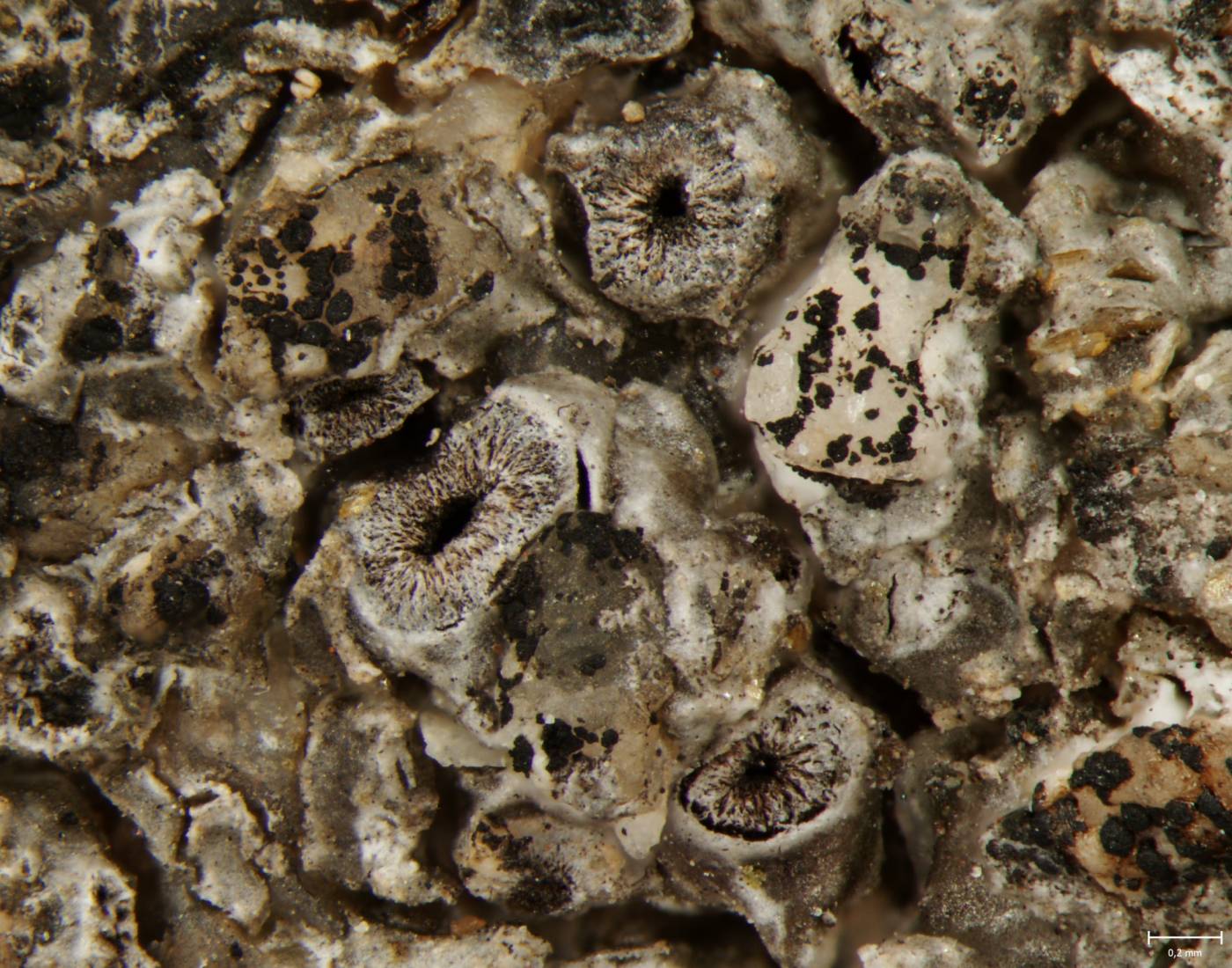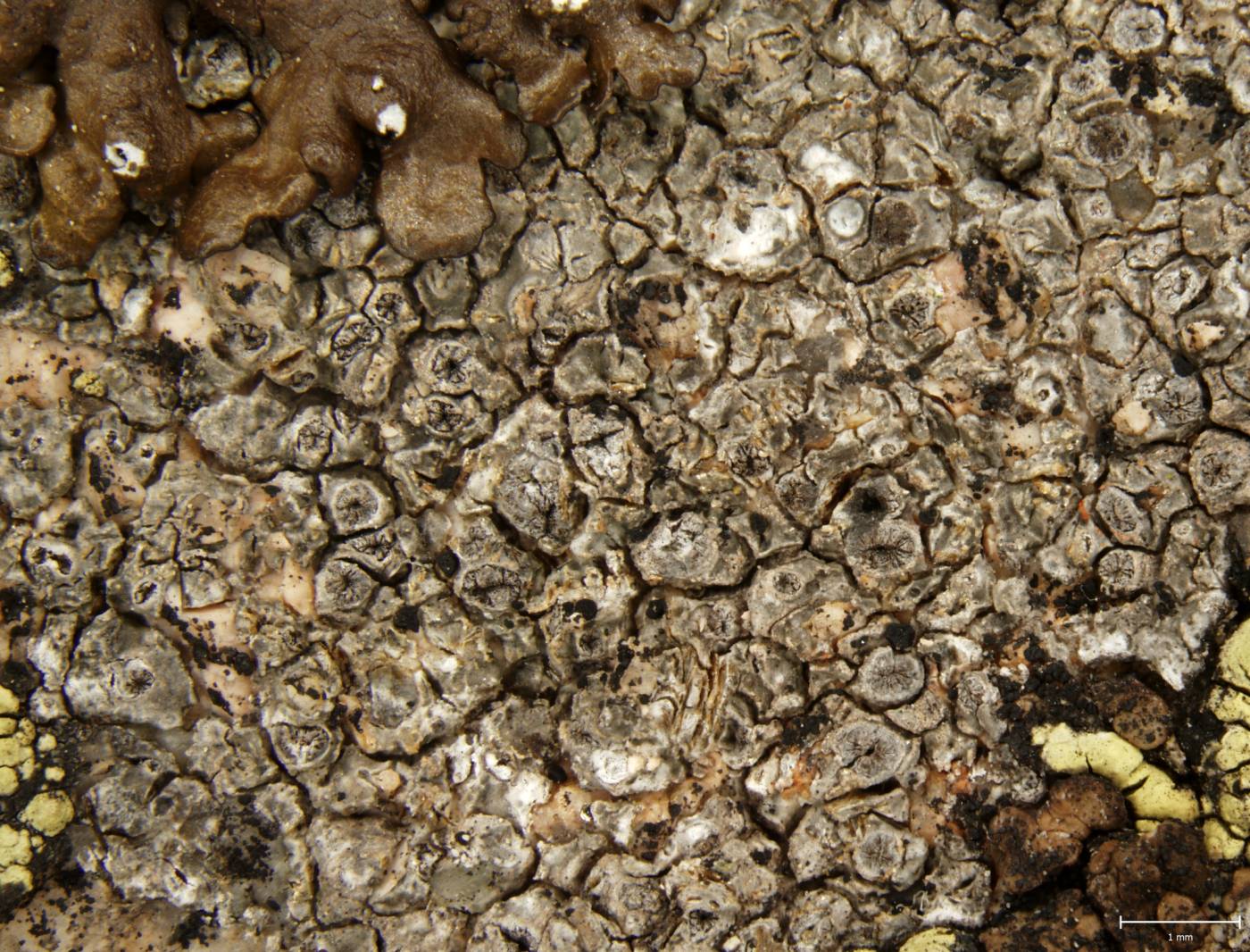This relatively inconspicuous lichen is characterised by its crater-like apothecia with furrowed apertures. Thallus is usually relatively thin, areolate, grey to brown-grey, and does not contain any lichen secondary metabolites. The very wide, nearly globular ascospores are also characteristic.
The species is typical for siliceous rocks but may be found in anthropogenic habitats, e.g. on roofs and bricks, as well. Young individuals sometimes even grow on thalli of Ochrolechia parella (Nimis et al. 2018). The European distribution of Diploschistes euganeus has a subatlantic-submediterranean character (Lumbsch 1989). In central Europe, the species is therefore very rare, reported only from a few localities. In the Czech Republic, the lichens was found very recently in the valley of the Berounka River (Týřov) and more localities by the water reservoir Slapy, where it grows on granodiorite and acidic volcanic rock.
Literature: Nimis P. L., Hafellner J., Roux C., Clerc P., Mayrhofer H., Martellos S. & Bilovitz P. O. (2018): The lichens of the Alps – an annotated checklist. – Mycokeys 31: 1–634. Lumbsch H. T. (1989): Die Holarktischen Vertreter der Flechtengattung Diploschistes (Thelotremataceae). – The Journal of the Hattori Botanical Laboratory 66: 133–196.
taxonomic classification:Ascomycota → Lecanoromycetes → Ostropales → Graphidaceae → Diploschistes
Red List (Malíček 2023):DD – data deficient
Occurrence in the Czech Republic
All records: 7, confirmed 7. One click on a selected square displays particular record(s), including their source(s).


